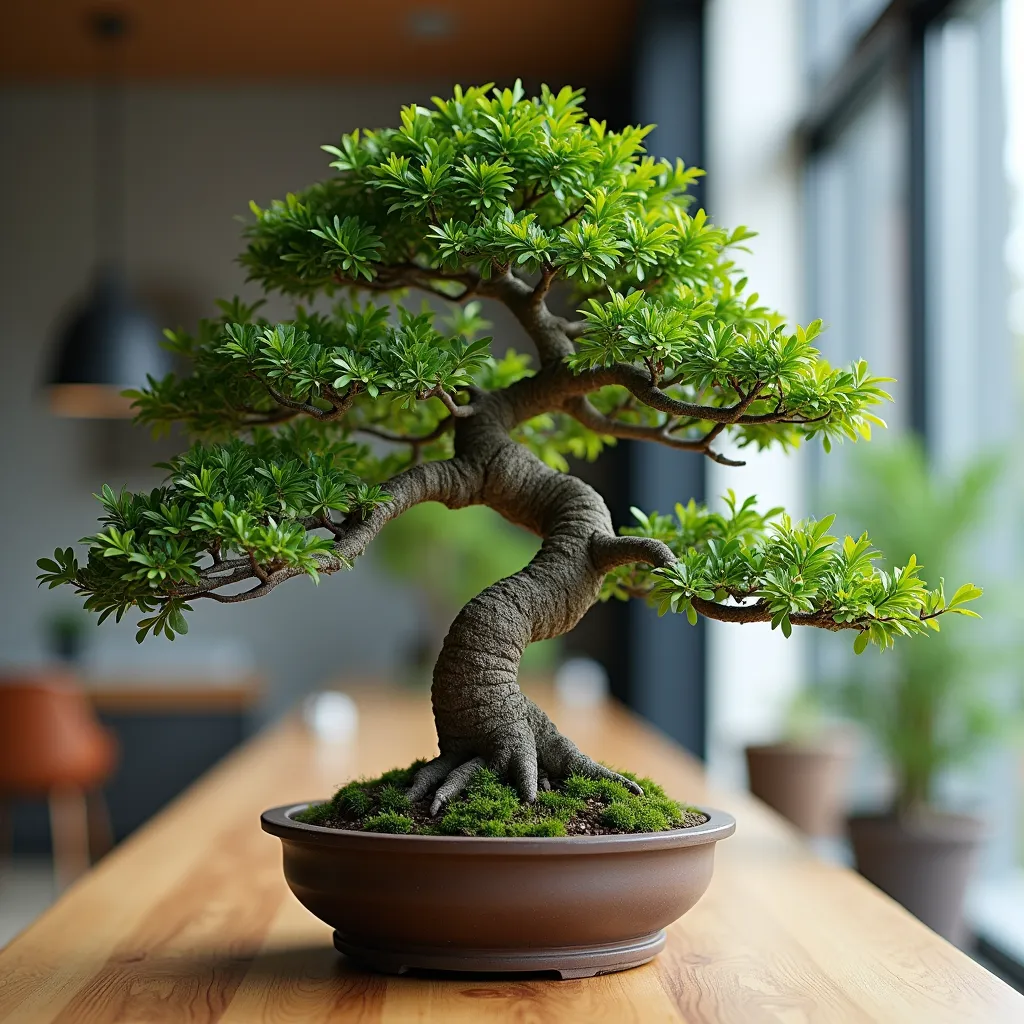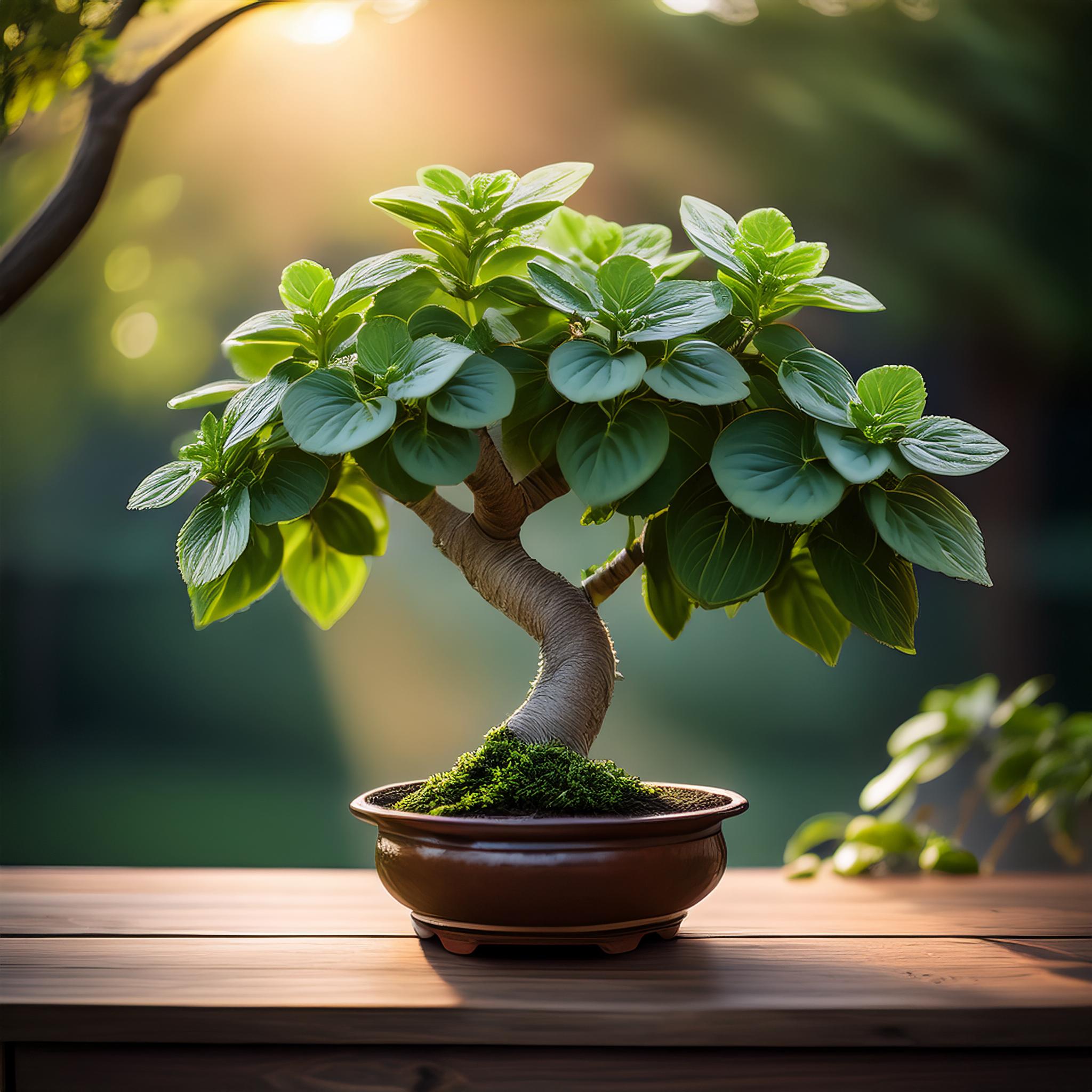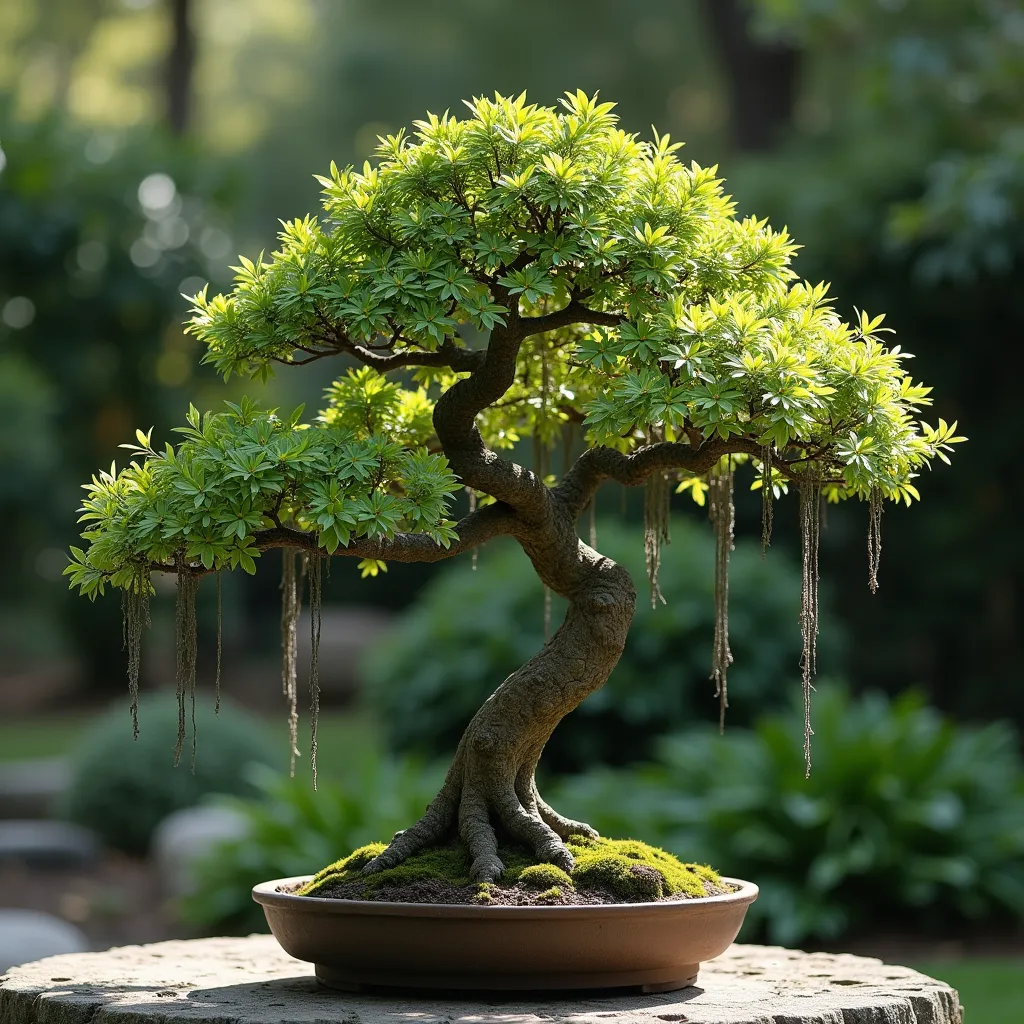16 Best Indoor Bonsai Tree Species: A Comprehensive Guide (Part 1)
Bonsai enthusiasts often face challenges when trying to grow these miniature trees indoors. However, with the right species selection, it's possible to create stunning indoor bonsai displays. In this comprehensive guide, we'll explore the first eight of sixteen indoor bonsai tree species, discussing their suitability for indoor environments and their value as bonsai specimens. Each species is rated on a scale of 1 to 10 for Indoor Suitability (IS) and Bonsai Value (BV), providing you with valuable insights to help you choose the perfect indoor bonsai for your home or office.
TOC
- Hibiscus: A Flowering Beauty with Challenges
- Cycas Revoluta: An Unconventional Palm-like Bonsai
- Crassula: Easy Care with Some Drawbacks
- Podocarpus Macrophyllus: The Indoor Conifer
- Commiphora: A Challenging African Beauty
- Plectranthus Ernstii: A Beginner-Friendly Succulent
- Schefflera Arboricola: The Indestructible Bonsai
- Duranta: A Versatile and Vigorous Tropical Tree
- FAQ
- Conclusion
Hibiscus: A Flowering Beauty with Challenges
Hibiscus is a popular choice for indoor bonsai enthusiasts due to its beautiful flowers and potential for intricate shaping. However, it does come with some challenges when grown indoors.
Indoor Suitability (IS): 6/10 Bonsai Value (BV): 8/10
While hibiscus can be kept indoors, it may not always thrive in this environment. These plants tend to lose leaves occasionally, indicating that they're not entirely content with indoor conditions. For beginners, hibiscus might not be the best starting point due to its somewhat finicky nature.
On the positive side, hibiscus is highly suitable for bonsai training. With proper care and techniques, you can achieve:
- Nice ramification (branching structure)
- Beautiful flowers
- Attractive overall shape
It's worth noting that some hibiscus species, like Rosa sinensis, have relatively large leaves, which may not be ideal for creating a sense of scale in smaller bonsai.
Cycas Revoluta: An Unconventional Palm-like Bonsai
Cycas revoluta, also known as Sago Palm, offers a unique twist on the traditional bonsai aesthetic. While it may not be everyone's first choice, it can make for an interesting and conversation-starting indoor bonsai.
Indoor Suitability (IS): 10/10 Bonsai Value (BV): 2/10
The Cycas revoluta thrives indoors, making it an excellent choice for those who want a low-maintenance indoor plant. It adapts well to indoor conditions and doesn't require special care to stay healthy.
However, its bonsai value is limited due to its growth habits:
- Doesn't branch out
- Limited styling options
- Root pruning is the primary bonsai technique applicable
Despite these limitations, having a palm-like bonsai can be a unique addition to your collection, especially if you appreciate its distinctive appearance.
Crassula: Easy Care with Some Drawbacks
Crassula, commonly known as the Jade Plant, is a popular choice for indoor bonsai due to its ease of care and wide availability.
Indoor Suitability (IS): 10/10 Bonsai Value (BV): 5/10
Crassula adapts exceptionally well to indoor environments, making it an ideal choice for beginners or those with limited experience in plant care. Its resilience and low maintenance requirements earn it top marks for indoor suitability.
However, its value as a bonsai specimen is somewhat limited:
- Flashy leaves that may look unrealistic for traditional bonsai
- Tendency to shed branches unexpectedly
- Difficulty in achieving and maintaining specific shapes
- Less spectacular appearance compared to other bonsai species
Despite these drawbacks, Crassula can still make for an interesting and low-maintenance indoor bonsai, especially for those new to the art.
Podocarpus Macrophyllus: The Indoor Conifer
Podocarpus macrophyllus, also known as the Buddhist Pine or Japanese Yew, is a rare find in the world of indoor bonsai – a conifer that can thrive indoors.
Indoor Suitability (IS): 8/10 Bonsai Value (BV): 10/10
This species adapts well to indoor conditions, but to truly thrive, it requires:
- Adequate light
- Higher humidity levels
When these conditions are met, Podocarpus can be a stunning addition to any indoor bonsai collection.
As a bonsai specimen, Podocarpus excels in several areas:
- Ability to create stunning deadwood features
- Versatility in styling (similar to pines or junipers)
- Compact foliage ideal for bonsai scale
Its high bonsai value makes it a must-have for serious indoor bonsai enthusiasts.
Commiphora: A Challenging African Beauty
Commiphora, a genus native to Africa, offers a unique and underutilized option for indoor bonsai enthusiasts looking for a challenge.
Indoor Suitability (IS): 6/10 Bonsai Value (BV): 6/10
While Commiphora can be kept indoors, it has some specific requirements:
- High heat demand, especially in winter
- May enter dormancy even in a living room setting
- Frequent leaf shedding if conditions aren't optimal
These factors make it a more challenging species to maintain indoors, especially for beginners.
As a bonsai specimen, Commiphora has both advantages and drawbacks:
- Frequent branching
- Difficulty in maintaining a consistent canopy due to leaf shedding
- Tendency to produce inverse taper (trunk widening towards the top)
While it can create spectacular bonsai when properly managed, it's not recommended for novice bonsai artists.
Plectranthus Ernstii: A Beginner-Friendly Succulent
Plectranthus ernstii is an excellent choice for beginners in the world of indoor bonsai, offering both ease of care and aesthetic appeal.
Indoor Suitability (IS): 10/10 Bonsai Value (BV): 8/10
This succulent thrives in indoor environments:
- Tolerates low light conditions
- Easy to care for
- Rewards with purple-white flowers
Its adaptability to indoor conditions makes it an ideal choice for those new to indoor bonsai cultivation.
As a bonsai specimen, Plectranthus ernstii offers several advantages:
- Delicate, thin leaves despite being a succulent
- Quick growth rate
- Frequent branching, allowing for easy shaping
These characteristics make it a versatile and rewarding species for bonsai cultivation.
Schefflera Arboricola: The Indestructible Bonsai
Schefflera arboricola, commonly known as the Dwarf Umbrella Tree, is an excellent choice for those seeking a hardy and forgiving indoor bonsai species.
Indoor Suitability (IS): 10/10 Bonsai Value (BV): 7/10
This species is renowned for its adaptability to indoor conditions:
- Nearly unkillable
- Tolerates both high humidity and dry air
- Thrives in strong light but can survive in darker spots
Its resilience makes it an ideal choice for beginners or those who may not have optimal growing conditions.
As a bonsai specimen, Schefflera arboricola has both strengths and limitations:
- Requires careful handling when bending branches (prone to tearing)
- Needs constant pruning to achieve ramification
- Well-suited to the banyan style of bonsai
While it may require some extra effort to shape, it can result in beautiful and unique bonsai specimens.
Duranta: A Versatile and Vigorous Tropical Tree
Duranta, a tropical tree species, offers a combination of rapid growth, beautiful blooms, and versatility in bonsai styling.
Indoor Suitability (IS): 7/10 Bonsai Value (BV): 10/10
While Duranta can be kept indoors, it does have some specific requirements:
- Needs high humidity to prevent leaf drop
- May slow down growth if conditions aren't optimal
Despite these challenges, with proper care, it can thrive as an indoor bonsai.
As a bonsai specimen, Duranta excels in numerous areas:
- Extremely vigorous growth
- Ability to create deadwood features
- Beautiful smooth, beige bark
- Produces flowers in various colors
- Versatile for different bonsai styles
Its combination of desirable traits makes it an outstanding choice for experienced bonsai artists looking for a rewarding indoor species.
FAQ
-
Q: Which indoor bonsai species is best for beginners? A: Schefflera arboricola (Dwarf Umbrella Tree) is an excellent choice for beginners due to its hardiness and adaptability to various indoor conditions.
-
Q: Can I grow a conifer bonsai indoors? A: Yes, Podocarpus macrophyllus (Buddhist Pine) is one of the few conifer species that can thrive as an indoor bonsai.
-
Q: Which indoor bonsai species flowers most readily? A: Hibiscus and Plectranthus ernstii are both known for their flowering capabilities when grown as indoor bonsai.
-
Q: What's the most challenging indoor bonsai species mentioned in this guide? A: Commiphora is considered one of the more challenging species due to its specific care requirements and tendency to shed leaves frequently.
-
Q: Which indoor bonsai species is best for creating unique or unconventional designs? A: Cycas revoluta (Sago Palm) offers a unique, palm-like appearance that stands out from traditional bonsai aesthetics.
Conclusion
This guide has introduced you to eight diverse and interesting species suitable for indoor bonsai cultivation. From the flowering beauty of Hibiscus to the unconventional appeal of Cycas revoluta, each species offers unique characteristics and challenges. Whether you're a beginner looking for a forgiving species like Schefflera arboricola, or an experienced enthusiast seeking the versatility of Duranta, there's an indoor bonsai species to suit your needs and preferences.
Remember that successful indoor bonsai cultivation requires attention to each species' specific needs, particularly in terms of light, humidity, and care techniques. By choosing the right species and providing appropriate care, you can create stunning miniature landscapes that thrive in your indoor environment, bringing the art and tranquility of bonsai into your home or office space.








